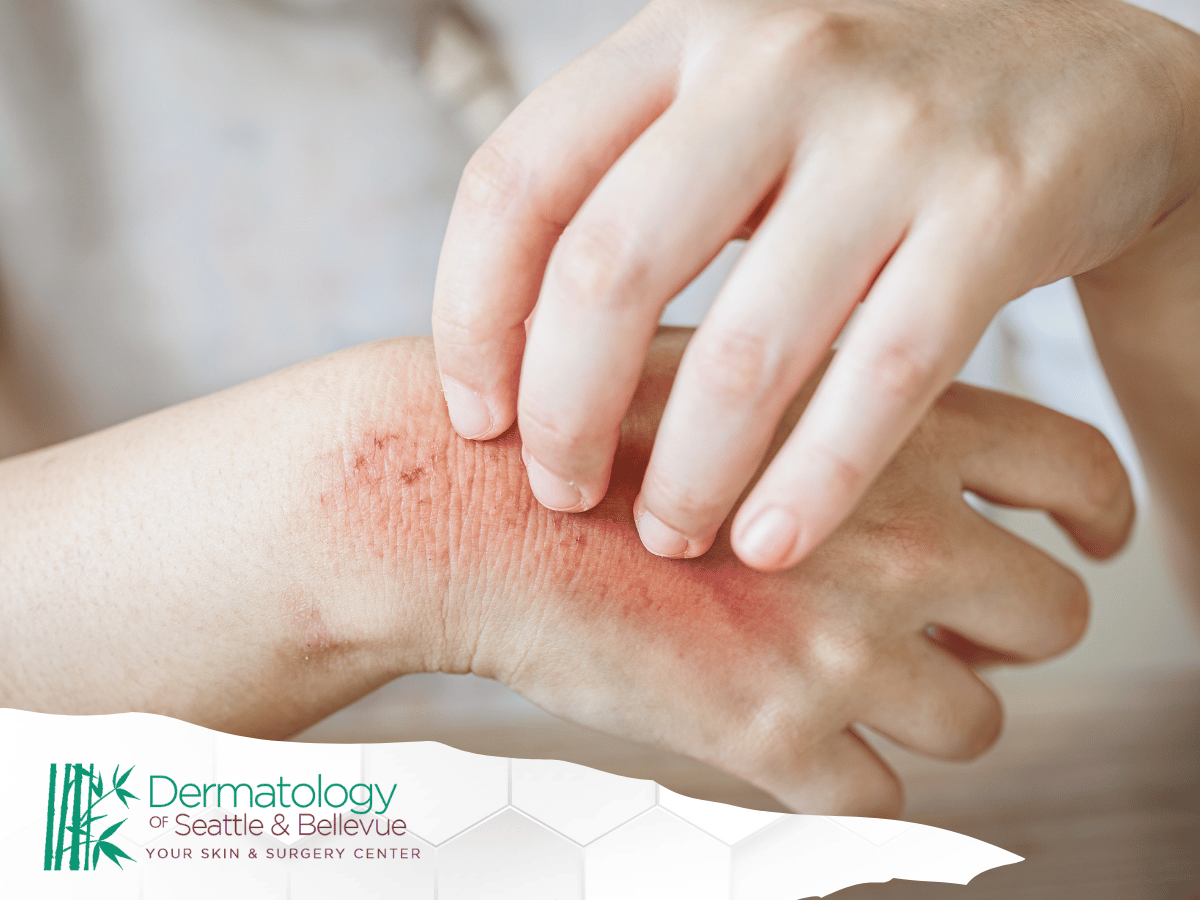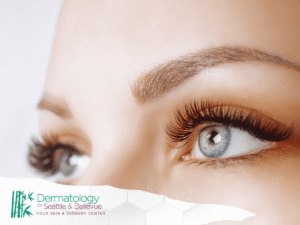Biologic medications have transformed the treatment landscape for chronic inflammatory conditions like psoriasis, rheumatoid arthritis, and Crohn’s disease. However, as with any medication, they can come with side effects—some of which show up on the skin. Recognizing these skin reactions early can help you manage symptoms effectively and avoid more serious complications. This guide will walk you through the basics of how to identify and respond to potential skin-related side effects of biologics.
Understanding Biologic Medications
Biologics are advanced drugs derived from living organisms. They are designed to target specific parts of the immune system, which makes them highly effective for autoimmune and inflammatory diseases. While these medications have significantly improved disease outcomes, they can also affect immune responses in unexpected ways—including on the skin.
What are Biologic Medications?
Biologic medications are large, complex molecules produced using biotechnology. Unlike traditional drugs, which are chemically synthesized, biologics are usually proteins like antibodies or enzymes. They work by interacting with key components of the immune system.
Common conditions treated with biologics include:
- Psoriasis and psoriatic arthritis
- Rheumatoid arthritis
- Crohn’s disease and ulcerative colitis
- Hidradenitis suppurativa
These medications include tumor necrosis factor (TNF) inhibitors, interleukin inhibitors, and more recently, Janus kinase (JAK) inhibitors.
How Do Biologic Medications Work?
Biologic medications work by selectively targeting molecules involved in the immune system’s signaling pathways. In autoimmune diseases, the immune system mistakenly attacks the body’s own tissues. Biologics interrupt this miscommunication, often by:
- Blocking inflammatory proteins like TNF-alpha or various interleukins (e.g., IL-17, IL-23)
- Modifying the activity of immune cells
- Preventing immune cells from binding to one another
This immune modulation reduces inflammation and slows disease progression—but it can also cause side effects, particularly on the skin.
Common Biologic Medications Used
Some of the most widely prescribed biologics include:
- Adalimumab (Humira) – TNF inhibitor used for rheumatoid arthritis, psoriasis, and Crohn’s
- Etanercept (Enbrel) – TNF blocker used for arthritis and psoriasis
- Ustekinumab (Stelara) – Targets IL-12 and IL-23, used in psoriasis and Crohn’s
- Secukinumab (Cosentyx) – Targets IL-17A, used in psoriasis and ankylosing spondylitis
- Dupilumab (Dupixent) – Used for atopic dermatitis and asthma
These drugs are powerful tools in controlling chronic inflammation but carry a risk of adverse skin reactions due to their mechanism of immune suppression or alteration.
Common Skin Reactions to Biologic Medications
Skin reactions from biologic therapy vary from mild rashes to more severe, chronic conditions like paradoxical psoriasis. The way these symptoms present can depend on the specific drug, the underlying condition, and your unique immune response.
Skin Rash
Skin rashes are among the most common adverse events seen with biologic medications. They can appear as red, itchy patches or bumps and may resemble eczema or allergic dermatitis. These rashes typically show up around the injection site but can also occur elsewhere on the body.
In some cases, these rashes are part of a paradoxical reaction—where a drug used to treat an inflammatory skin disease actually triggers a new skin issue, such as psoriasis. Monitoring the timing, location, and nature of the rash is key for determining whether it’s related to your biologic treatment.
Itching
Persistent itching (pruritus) can be a standalone symptom or accompany a rash. While it may seem minor, chronic itching can severely affect quality of life and may indicate an underlying inflammatory reaction to the biologic. Itching may be generalized or localized, and sometimes precedes visible skin changes.
Redness
Skin redness, or erythema, may occur at the injection site or across larger areas of skin. This redness may:
- Feel warm to the touch
- Be accompanied by swelling or tenderness
- Fade on its own or persist over time
While mild redness after an injection is often normal, persistent or spreading redness may suggest an adverse skin reaction, particularly if paired with itching, rash, or discomfort.
Dry Skin
Dry, flaky skin can emerge as a reaction to biologic medications, especially in those with autoimmune diseases already affecting skin hydration. This dryness may be generalized or patchy, and is often mistaken for simple irritation or seasonal skin changes. However, if it develops after starting treatment, it could be a mild inflammatory response.
In some cases, patients experience scaling or rough texture that mimics dermatitis. Applying fragrance-free moisturizers and avoiding harsh cleansers may help relieve symptoms, but persistent dryness should be brought to your healthcare provider’s attention.
Blisters
Blisters are less common but may occur as part of more severe skin reactions like bullous drug eruptions or autoimmune blistering conditions. These blisters may:
- Be filled with clear or yellow fluid
- Appear on the hands, feet, arms, or trunk
- Break open and become painful or scabbed
Blisters signal a need for immediate evaluation, especially if accompanied by fever or widespread rash. A dermatologist or rheumatologist can determine if the reaction is linked to your biologic treatment.
Identifying Skin Reactions
Timing of Skin Reactions
The timing of symptoms can provide valuable clues. Some reactions occur within hours of the first injection, while others may emerge weeks or even months into treatment. Delayed reactions, such as paradoxical psoriasis, might not be immediately linked to the medication unless tracked closely.
In general:
- Immediate reactions often relate to hypersensitivity or injection site irritation.
- Delayed reactions may involve immune system dysregulation or paradoxical inflammation.
Location of Skin Reactions
Where the reaction occurs can help identify the type and cause. Injection site reactions—such as redness, swelling, or itchiness—are usually localized and mild. However, widespread skin reactions could indicate systemic involvement or a paradoxical effect triggered by immune modulation.
Typical locations include:
- Injection sites (arms, thighs, abdomen)
- Scalp, elbows, and knees (common for psoriasiform lesions)
- Torso or trunk (in generalized drug eruptions)
Unusual patterns, especially when lesions mimic pre-existing skin conditions like psoriasis or eczema, should always be assessed by a dermatologist.
Severity of Skin Reactions
Not all skin reactions are equally concerning. Some mild irritation may resolve with basic skin care, while others might indicate the need to pause or discontinue treatment. Dermatologists often assess severity based on:
- Extent of affected area
- Presence of systemic symptoms (fever, fatigue)
- Type of lesion (blistering, ulceration, scaling)
High-severity reactions often require biopsy, drug cessation, or immunomodulatory therapy to reverse.
Consulting a Healthcare Provider
Consulting a doctor at the first sign of a reaction is essential. Skin symptoms may appear harmless at first but worsen over time if untreated. Timely evaluation can help prevent complications and ensure your treatment remains both safe and effective.
Importance of Seeking Medical Advice
Even minor skin symptoms can signal important immune responses. Biologic medications work by altering immune function, so unexpected rashes, blisters, or itchiness shouldn’t be ignored. A healthcare provider—particularly a dermatologist or rheumatologist—can help determine if your symptoms are benign or part of a more serious adverse event.
Prompt consultation ensures:
- Early identification of adverse reactions
- Prevention of more severe immune responses
- Proper adjustment or continuation of therapy
What Information to Provide to Your Doctor
When visiting your doctor, it’s helpful to bring detailed information about the reaction. The more accurate your report, the easier it is for the provider to determine whether it’s related to your biologic medication.
Here’s what to include:
- When the reaction began
- Description of symptoms (itching, redness, dryness, blisters)
- Areas of the body affected
- Any over-the-counter products used
- Photos of the reaction (if possible)
This information supports quicker diagnosis and minimizes unnecessary treatment interruptions.
Tips for Managing Skin Reactions
Managing skin reactions while on biologics involves supportive care and close communication with your provider. While not all reactions require stopping the medication, ongoing irritation or more serious cutaneous effects should always be evaluated. In most cases, symptoms can be managed with targeted skincare and lifestyle adjustments.
Proper Skin Care
Gentle skincare can reduce irritation and improve skin barrier function. Patients using biologic medications should adopt routines that protect against dryness, itching, and inflammation without interfering with treatment.
Basic skin care tips include:
- Use fragrance-free, hypoallergenic moisturizers
- Avoid hot showers or harsh soaps
- Pat skin dry instead of rubbing
- Apply emollients immediately after bathing
- Wear loose, breathable clothing to prevent friction
Avoiding Triggers
Certain environmental and lifestyle triggers can worsen skin reactions, especially when the immune system is being modified by biologics. Being aware of and avoiding these triggers can help maintain skin stability during treatment.
Common triggers to avoid:
- Prolonged sun exposure
- Harsh skincare products
- Excessive heat or sweating
- Scratching or picking at irritated skin
- Stress, which can aggravate immune responses
Medications for Symptom Relief
In some cases, your healthcare provider may recommend short-term medications to relieve discomfort or inflammation. These can be used in tandem with your biologic regimen when skin reactions occur.
Options may include:
- Topical corticosteroids for localized inflammation
- Antihistamines for itching
- Antibiotics or antifungals if infection is present
- Nonsteroidal creams for mild irritation
Always follow medical advice and avoid self-treating severe skin reactions, as incorrect use of medications could lead to complications.
Monitoring and Tracking Skin Reactions
Ongoing monitoring plays a critical role in managing reactions to biologic medications. Tracking symptoms over time helps both patients and providers understand patterns, assess whether changes in treatment are needed, and spot potential long-term issues early.
Keeping a Skin Reaction Journal
A simple journal can go a long way in identifying trends and triggers. It’s especially useful for documenting reactions that appear days or weeks after starting or changing a biologic medication.
What to include:
- Date and time of reaction
- Description of the skin change (e.g., redness, rash, dryness)
- Any new foods, products, or medications introduced
- Weather or environmental conditions
- Response to any topical or oral treatments used
Regular Check-Ins with Healthcare Provider
Don’t wait for annual checkups to report skin issues. Regular communication with your doctor—especially early in treatment—can help fine-tune your regimen and prevent complications. Even if the reaction seems minor, it may indicate an evolving immune response that deserves medical attention.




